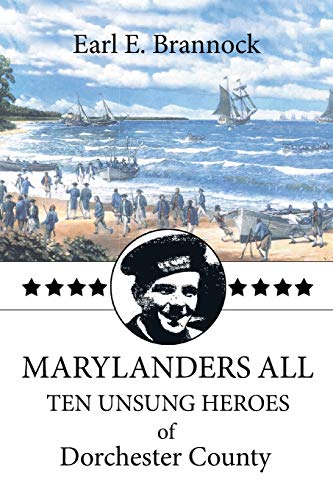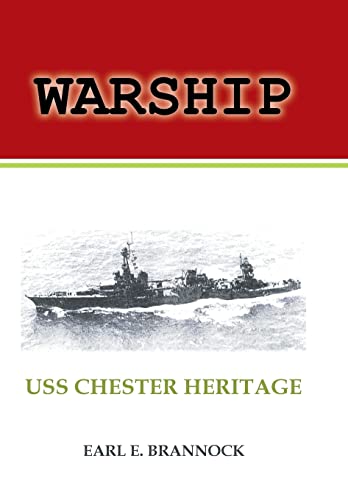Brannock Earl Larson Kay (3 results)
Product Type
- All Product Types
- Books (3)
- Magazines & Periodicals
- Comics
- Sheet Music
- Art, Prints & Posters
- Photographs
- Maps
-
Manuscripts &
Paper Collectibles
Condition
Binding
Collectible Attributes
- First Edition (1)
- Signed
- Dust Jacket (1)
- Seller-Supplied Images
- Not Printed On Demand
Seller Location
Seller Rating
-
MARYLANDERS ALL: TEN UNSUNG HEROES of Dorchester County
Published by Xlibris US, 2014
ISBN 10: 1493150693ISBN 13: 9781493150694
Seller: Lucky's Textbooks, Dallas, TX, U.S.A.
Book
Condition: New.
-
MARYLANDERS ALL: TEN UNSUNG HEROES of Dorchester County
Published by Xlibris US, 2014
ISBN 10: 1493150693ISBN 13: 9781493150694
Seller: dsmbooks, Liverpool, United Kingdom
Book
Paperback. Condition: Like New. Like New. book.
-
Warship; USS Chester Heritage
Published by Xlibris LLC, Bloomington, IN, 2014
ISBN 10: 1493166565ISBN 13: 9781493166565
Seller: Ground Zero Books, Ltd., Silver Spring, MD, U.S.A.
Book First Edition
Hardcover. Condition: Very good. Dust Jacket Condition: Very good. C. Kay Larson (Cover Design) (illustrator). 80 pages. Illustrations. Map. Signed by the author on the front free endpaper. Rare. Foreword by Arleigh Burke (dated 1993). Includes Illustrations, Introduction, Bibliographical Note, and About the Author. This book focusses on three American naval vessels, all named Chester. The first was an armed galley, which fought during the American Revolution, as part of the Continental Navy. The second Chester was a light cruiser, which did not emerge until just before World War 1. Its crews served during that war, during the submarine warfare engaged in with German U-boats. The third USS Chester, also a light cruiser, was commissioned in 1930. By 1941, the United States was in a quasi-war with Germany on the Atlantic Ocean, and Americans in Asia were threatened by Japanese occupation. The USS Chester steamed into Pearl Harbor naval base in the early afternoon of December 7, 1941, missing the brunt of the early morning Japanese bombings, due to delays caused by a storm at sea. From that day on, Chester was active in nearly every major engagement in the Pacific Theater during World War II. Legendary officers like William Halsey commanded Chester's units, and Adm. Arleigh Burke served on Chester. Chester (CA-27) received 11 battle stars for World War II service. The Chester was placed out of commission in reserve in Philadelphia on 10 June 1946. She was sold for scrap on 11 August 1959. Earl A. Brannock was an historian, author and maritime expert who established the Brannock Maritime Museum in Cambridge and helped bring the tall ships to Baltimore in 1976's Operation Sail. "Earl was an interesting character who ran his own private maritime museum in Cambridge for years," said Pete Lesher, a noted Chesapeake Bay maritime and boat-building historian who is curator of the Chesapeake Bay Maritime Museum in St. Michaels. "He was particularly interested in making the maritime connection to Dorchester County and had collected shipbuilding tools, models and trailboards," he said. "It was an eclectic collection, and it was all tied together by the sea and its connection to Dorchester County's past." His family's Eastern Shore roots go back to the 1660s. He enlisted in the Navy in 1942. After completing training, he was assigned to the heavy cruiser USS Chester, and because he had served earlier on the DuPont, he was nicknamed "Oyster Pirate" by his crewmates. Mr. Brannock served in the Pacific. By the war's end in 1945, he had participated in nine major battles including Saipan, Iwo Jima and Okinawa, and 39 bombardments. The Chester was at Kulak Bay in the Aleutian Islands when news of the end of the war reached the ship. "You could feel the ship vibrate with the news," wrote Mr. Brannock, with his co-author, C. Kay Larson, in "Marylanders All: Ten Unsung Heroes of Dorchester County," published in 2013. Americans have been a seafaring people, since before the first Jamestown and Plymouth settlements, as British ships plied the Atlantic conducting coastal trade. It is no wonder then that, even when a small nation, the U. S. Navy proved itself a force to be reckoned with. This tradition continues, as the United States deploys the strongest naval forces in the world. Over three centuries, thousands of American warships and their crews, manning both commissioned vessels and privateers, have helped defend liberty at home and fought for freedom abroad. This monograph describes three of those belligerents, all named CHESTER, all of which achieved sterling records of valiant service. The first CHESTER, an armed galley, fought during the American Revolution, as part of the Continental Navy. Fittingly, it was sponsored by the Maryland Colony, a shipping powerhouse, even during the eighteenth century, and named after its construction location, Chestertown, Maryland. Another CHESTER, a light cruiser, did not emerge until just prior to World War I. It was also named after its mid-Atlantic shipbuilding town, Chester, Pennsylvania. Its crews served in the Great War, mostly on convoy duty, during the submarine warfare engaged in with German U-boats. The third USS CHESTER (CA-27), also a light cruiser, was commissioned in 1930, and also named after Chester, Pennsylvania. Brannock's account of the duties it performed during the interwar years provides a unique portrayal of life as a U. S. Navy sailor at that time. Political upheavals in nations where American citizens and interests had to be protected were prevalent in Central America, and diplomatic and military missions were carried out, while an arms race engulfed Europe. Moreover, during the glamorous 1930s, millions traveled on ocean-going liners and so naval vessels were greeted in foreign ports by enthusiastic crowds and celebrations. CHESTER crews were feted on two continents. Yet as the decade went on, war clouds darkened, world-wide. By 1941, the United States was in a quasi-war with Germany on the Atlantic Ocean, and Americans in Asia were threatened by Japanese occupation. USS CHESTER steamed into Pearl Harbor naval base in the early afternoon of December 7, 1941, missing the brunt of the early morning Japanese bombings, due to delays caused by a storm at sea. From that day on, CHESTER was active in nearly every major engagement in the Pacific Theater, during World War II. Legendary officers like William "Bull" Halsey commanded CHESTER's units. Adm. Arleigh Burke served on CHESTER. By 1943, author Brannock had joined the crew as a young enlisted sailor, but one who had logged many hours underway, while serving in the Maryland State Fishery Force (also known as The Oyster Navy). Thus, as a quartermaster on CHESTER's bridge, Brannock had a gull's eye view of the battles. His perspective was enhanced by the fact that CHESTER often served as flagship for Cruiser Division 5 and various task forces to which it was temporarily assigned. For these obvious reasons, the account of USS CHESTER's World War II service comprises the bulk of this book. Because Brannock person.



